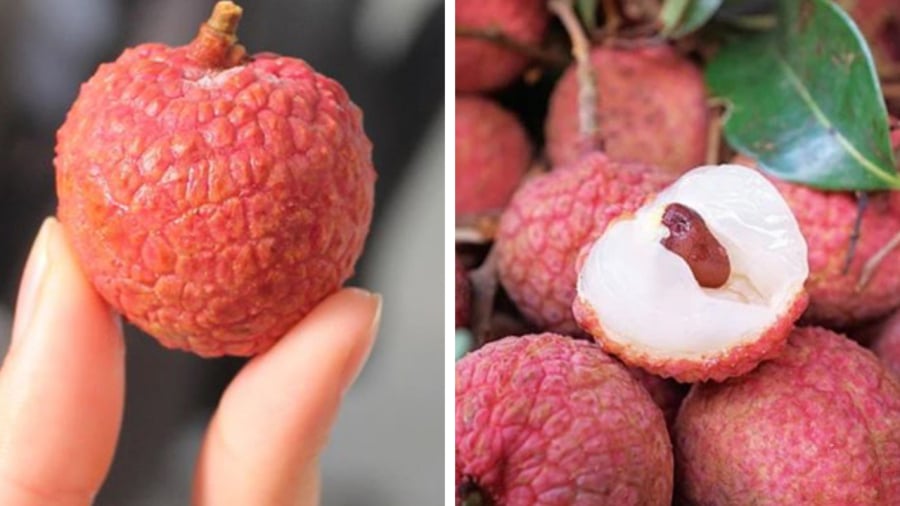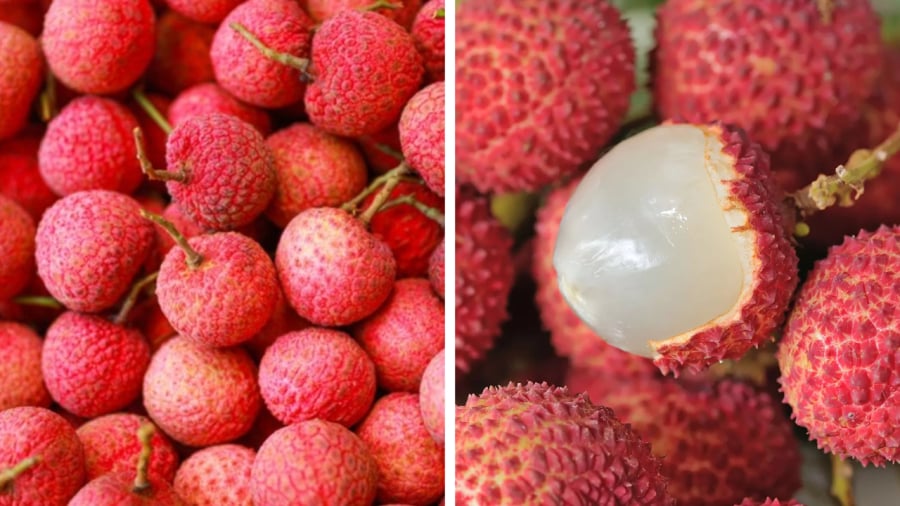June is approaching, and it’s almost lychee season. This is the time when people can enjoy freshly-picked, juicy, and sweet lychees, either directly or by incorporating them into delicious lychee-based dishes.
Lychees are widely cultivated in various regions across the country, such as Thanh Ha (Hai Duong) and Luc Ngan (Bac Giang). The market also offers a diverse range of lychee varieties, each with its unique flavor.
When it comes to purchasing lychees, many people wonder how to choose the sweetest and most delicious ones with small seeds. To select the best lychees, consider the following tips:
Fruit Size
Contrary to popular belief, larger lychees with bright red skins are not always the sweetest. For a sweeter and thicker-fleshed lychee, opt for those of medium size. Smaller lychees tend to have smaller seeds, translucent flesh, and a more concentrated sweetness. Larger lychees, on the other hand, often have larger seeds and less sweet flesh.

Sweet lychees don’t always come in large sizes with bright red skins.
Examine the Stems
When buying lychees, look for those with small stems. You can snap off one stem to test—ideal lychees have crisp skins and white, evenly-shaped tips. Small-stemmed lychees usually have smaller seeds.
Check the Spines on the Skin
Tastier lychees tend to have smoother skins. If the lychee’s skin has many small spines and feels rough, it may taste sour and not as pleasant as the smoother-skinned ones.
Color of the Lychees

Pay attention to the color, shape, and skin of the lychees when selecting the sweetest ones.
Lychees from Thanh Ha are typically round, not too large, and have a reddish-pink skin tone. Sweet lychees often exude a distinctive aroma, noticeable even from the outer skin. Crossbred lychees usually lack this characteristic fragrance.
Avoid lychees with dark spots or black marks near the stems, as these tend to overripen quickly and may taste unpleasant, or even become infested with worms.
Test for Firmness
Gently squeeze the lychee to check its freshness. If it feels soft yet firm, and not mushy, it’s perfectly ripe.
If the lychee is hard, it’s unripe, and if it’s too soft, it’s likely overripe, picked a long time ago, or past its prime.

































